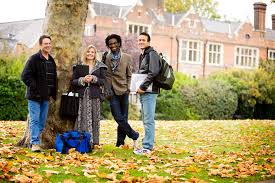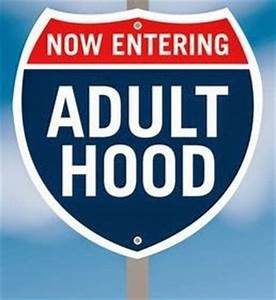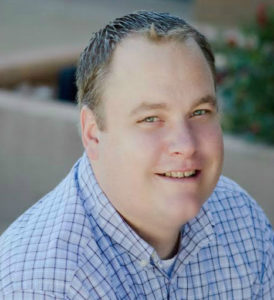Parents often ask me, “How do you teach your kids how to be responsible?” Responsibility is defined as the state of fact of being responsible, answerable, or accountable for something within one’s power, control, or management. So how do we teach our kids to be responsible?
The Perfect Life

As parents we want our children to succeed and do well socially and academically. We want our children to never have to struggle too much, be uncomfortable, or be disappointed. We want them to attend the best colleges and universities and meet that special someone whom they will marry. Eventually we want them to grow up to be productive citizens and good parents themselves.
The Problem
In the 1980’s scientists built a biosphere in the mountains of Arizona. It was an attempt to create the “perfect” living environment for the human, plant, and animal life. The environment was created for perfect growing conditions for trees, fruits, and vegetables. The trees inside this sealed enclosure grew more rapidly than other trees in natural environments. However, they had weak underdeveloped root systems. When the trees grew to be a certain height, they would fall over. Scientists realized they forgot the natural element of wind. Trees need wind to help them grow their root systems deeper into the soil which in turn helps support the trees as they grow taller. The trees were not allowed to struggle and their roots and foundations were not strong enough to hold them up as they grew.
Children and Adolescents Learn Responsibility by Learning to Solve Their Own Problems
Children and adolescents learn responsibility through the natural experiences of life by learning to solve their own problems with their parents’ guidance. As a parent, have you rescued your child from getting poor grades, being teased, playing too rough on playgrounds, having to deal with a difficult teacher or peer at school? Have you made excuses for your child not completing tasks or chores or have you protected them from uncomfortable feelings or situations? Every parent has done this at one point or another. The more experiences and mistakes children and adolescents make the more they will learn how to be responsible.
The Solution
Is it possible for children who have not been responsible for their actions and who have not solved their own problems to have the tools to face the rigors of adult life? Children who are robbed of the opportunities to solve their own problems will struggle as adults. Parents are not obligated to solve their child’s problem. Parents need to hand the problem back to their child in a loving way and guide them to solve their own problems.
Guiding Children to Solve Their Own Problems
The popular Love and Logic® parenting classes have outlined five steps in helping our children solve their own problems.
| Parents Response | |
| Step One: Provide a strong and sincere dose of empathy.
Empathy opens the mind to thinking and problem solving |
When you hear, “My teacher is mean” or “My homework is not done” or “He won’t leave me alone”, resist the urge to fix their problem.
“Oh, that’s got to be upsetting” or “Dang, I bet that’s frustrating” or “I love you. That is so sad.” |
| Step Two: Lovingly hand the problem back. | “What do you think you’re going to do?”
“How are you going to solve your problem?” Don’t be surprised when they say, “I don’t know.” Move on to step three. |
| Step Three: Get permission before sharing ideas. | “Would you like to hear what some other kids have tried?”
Do not use “you should” or “you could”. This increases resistance. If they do not want suggestions, move on to step five. |
| Step Four: Provide a brief menu of ideas and help them evaluate each idea. | “Some kids decide to ___. How would that work for you?
You do not need to have a large list of ideas. The idea is to get them to begin thinking about possible solutions and their likely consequences. Start with a really poor solution, this gets them thinking more after they reject your ridiculous solution. Children tend to reject the first thing we offer so don’t waste good suggestions. Do not tell them which solution to try. When we make the decision we rob them from learning and increasing their self-esteem when their idea succeeds. |
| Step Five: Allow them to learn from solving or not solving the problem. | After sharing some ideas, end by saying, “I love you. If any kid can solve a problem like this, you can. Let me know how it works out.” |
FREEDOM

Parents who apply these steps have less stress and more responsible kids. These steps can be used for children and adolescents with Autism, ADHD, and other Behavioral Disorders with some slight modifications. The effectiveness of this approach does not depend on our children listening to our wisdom. It depends on our ability to empathetically hand the problem back in a loving way and help them explore solutions to their problems. Children and adolescents who learn to solve their own problems when they make mistakes or are faced with challenges will have a stronger foundation and become independent, responsible, and respectful adults.
 |
Kyle Bringhurst is a behavior and mental health consultant and life coach who specializes in working with children, adolescents, adults, and their families. He is the founder of a company called Arizona Behavioral Consulting which specializes in Autism Spectrum Disorders, Attention Deficit Hyperactivity Disorder (ADHD), Anxiety, Behavioral Disorders, Depression, Developmental Delays, Traumatic Brain Injuries and Neurodevelopmental Disorders.
He provides parenting classes for parents of children with Autism, ADHD, and Developmental Delays. He also provides in-home, school, and community services in Queen Creek, Gilbert, Chandler, Mesa, Tempe, San Tan Valley, and Apache Junction. |
Contact:
Phone: 435-705-8664
Email: kyle@arizonabehavioralconsulting.com
